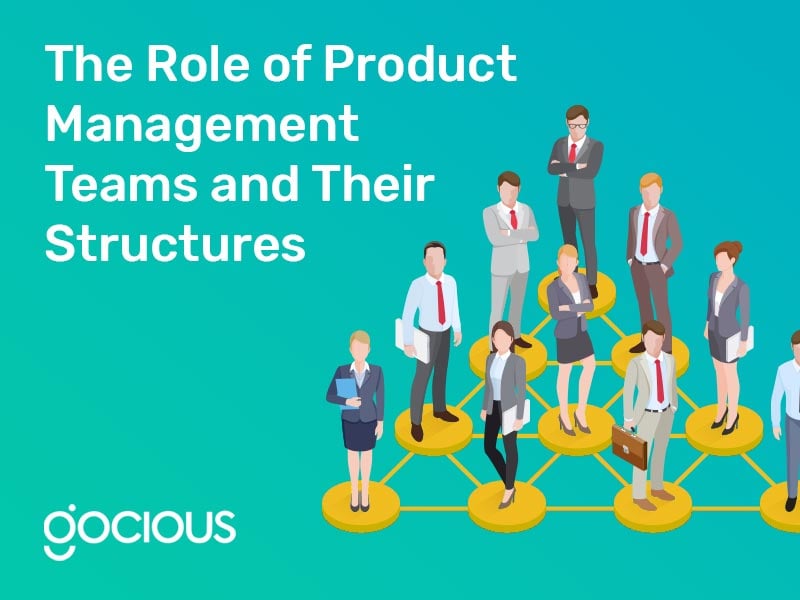
Subscribe to our blog
Ready to improve your roadmapping process?
Curious about how Gocious can help your manufacturing team transform its Product Lifecycle Management strategy? Let’s schedule a call to explore!
Product Management Articles
Does Set-Based Design Lead to Better Products?
Every product development team wants to create the best product possible. It’s easy to generate and collect great ideas. Still, it’s more challenging to explore the best options, let alone decide on the winning version that will please the customer and be commercially viable. Scoring methods can help sift through a long list of ideas, but how does the product team choose which ones to develop? One strategy that product management teams can use is Set-Based Design (SBD).
7 Ways to Deliver Value During a Product Critique Workshop
It takes a lot more than sheer luck to create a product that flies off the shelf or the lot. There is an extensive team of developers, engineers, designers, marketers, and managers behind that product. Delivering a great concept from the idea phase to successful sales requires coordination, collaboration, thorough testing, and refining. Product critiques play an integral part in the testing and refining process. Gathering a range of feedback before the final version launches leads to greater product success.
The Role of Product Management Teams and Their Structures
Your product management team is the backbone of your product development activities, whether you manufacture physical goods, produce hardware, or develop software. The members of your product management teams are essential for keeping everyone collaborating effectively to create great products.
5 Challenges of Cyber-Physical Product Development
Ever since the launch of the first iPhone in 2007, consumers have grown accustomed to physical devices containing software systems. Every year, we're introduced to various new products with astonishing capabilities that directly impact our everyday lives. In addition to the products people use in their daily lives, there are many more products that we benefit from, even if the average person never interacts with them directly. From autonomous vehicles to sophisticated medical devices to space exploration, cyber-physical products are all around us and shaping our future.
5 Essential Factors to Consider in Product Portfolio Management
Product portfolio management is far more involved than managing a specific product model. It involves monitoring, analyzing, and strategically assessing multiple product lines to ensure all models are meeting the needs of the target customer. To successfully manage a product portfolio, companies need to take into account their current and potential offerings while maintaining profitability.
What Is a Product Critique and When Do You Need Them?
Have you ever bought a product and wondered why it had so many features or ones that seemed unnecessary? Many products hit the market every year, but only a selection of those are successful. The ones that succeed do so because they meet the needs and wants of the target customer, which, in most cases, is the result of regular testing, iterations, and practical product critique sessions.
How to Support Cross-Collaboration with Engineering Teams
It takes many people to design and develop an amazing product. Many companies with large complex hardware, software, or cyber physical products can have numerous teams working simultaneously and in tandem with each other to ensure the best model makes it to the market. Successful products happen when great minds and teams work together. While it’s easy to imagine that this collaboration happens organically, the reality is that teamwork needs to be fostered.
Capturing Your Customer's Needs and Turning them into Actionable Solutions for Prioritization
Your company has created a product your customers love, and your sales team and distributors can hardly keep up with the demand. While your team is basking in the launch's success, you also know that it's only a matter of time before the competition launches something new. Unless you also introduce a new feature, you may lose some of your customers. Your team needs to focus on idea generation and prioritization to stay competitive.
Feature Scoring in Product Development: When to Do It and Why
Choosing between two great options is a struggle for anyone. When faced with the decision, there can be a feeling of loss for the choices not selected. When it comes to ideas and group discussion, it can even feel personal. The more options thrown into the mix, the more challenging the decisions become.
Your Guide to Sharpening Scoring Skills & Reducing Bias
Product development teams are always eager to improve their products. This passion for the product and quest to make improvements leads to a flood of ideas pouring in on a regular basis. Naturally, everyone who submits an idea believes their suggestion is great and should be implemented. While their idea may be good, that doesn’t guarantee it’s the right idea to focus on next. Product development decisions need support from data and research.
Product Management Glossary: Key Terms and Their Definitions
The world of product management encounters an array of technical terms, phrases, and acronyms that can confuse even seasoned professionals in the product management realm. To aid both aspiring product managers and those who want to master their field, we’ve created this comprehensive glossary of fifty essential product management terms and their definitions to help you collaborate better with your colleagues and boost your knowledge.
Why Manufacturers Should Prioritize Cyber Security When Choosing a SaaS Provider
Manufacturing companies benefit from technological advances across their organizations. Technology simplifies tasks and task management from the factory floor to the design and development stages to company-wide correspondence. The prevalence of technology makes security one of their top concerns, and for good reason. Large manufacturing companies are a target for their intellectual property, sensitive customer and employee data, and money. Cyber threats are a real concern, from phishing scams that can target any employee, ransomware or data breaches resulting from vulnerable networks to supply chain disruptions.
Subscribe to our blog
Topics
- Product Management (121)
- Product Development (107)
- Product Roadmap (59)
- Manufacturing (29)
- Just Released (28)
- Webinars (15)
- Agile (11)
- Competitive Analysis (9)
- Digital Transformation (7)
- Automotive (5)
- Roadmap (5)
- Cyber Physical (4)
- Platform Manufacturing (3)
- AI (2)
- Capabilities (2)
- Interval Roadmaps (2)
- Design Thinking (1)
- Electronics (1)
- Security (1)
- Strategy (1)













